Cannondale has given its Scalpel race bike a refresh for 2024, with a new frame designed to tackle the modern requirements of an XC racer.
The brand claims the needs of XC riders are similar to those of downcountry fans – bikes that are fast, comfortable and capable – so, with a change of rubber, there’s a strong argument that the Scalpel can do both jobs well.
Revisions include the move to 120mm travel at both ends of the bike, updated geometry to boost its capability and a slightly revised suspension kinematic.
This £8,550 / €9,499 Scalpel 1, which weighs 11kg, sits second from the top of the range, with the super-exclusive Lab71 version coming with every bell and whistle available, and a five-figure price.
US readers will be able to purchase an American version of the bike with a full complement of Fox suspension. That means a Fox Float shock and Fox 34 Step-Cast fork, both in their Factory form, rather than the RockShox-shock and Lefty-fork version I’ve ridden. It’ll cost you $9,500.
I rode the Scalpel 1 on two damp days in Portugal at the launch of the bike, so these are only brief impressions of what I reckon will be a bike we’ll see towards the sharp end of many XC races this year.
I should be receiving a bike here in the UK soon, so this review will get updated in a few months' time.
Cannondale Scalpel 1 frame
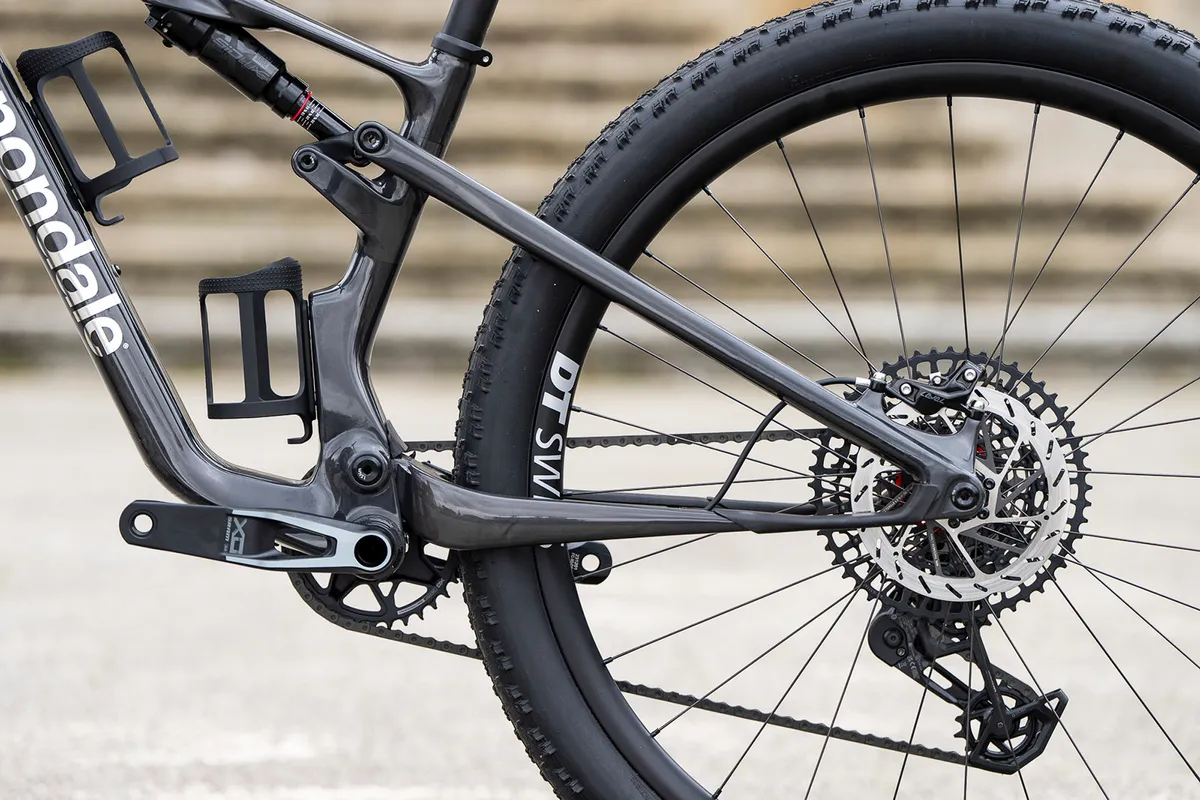
The frame is constructed from carbon fibre, as you’d expect from a top-end race bike. On the Scalpel 1, this is Cannondale's Series 1 carbon, while the Lab71 gets a Series 0 construction, saving around 300g.
Still, this high-end racer comes in at roughly 11kg on the scales (claimed, Medium).
The kinked seat tube allows for longer-drop dropper posts, while also helping ensure there’s ample room for a pair of water bottles in the frame – all frame sizes, from S to XL, can fit two bottles.
Cables run through the headset. This might not please everyone, but to make it as simple as possible, Cannondale has enlarged the top headset bearing to 1.5in in diameter.
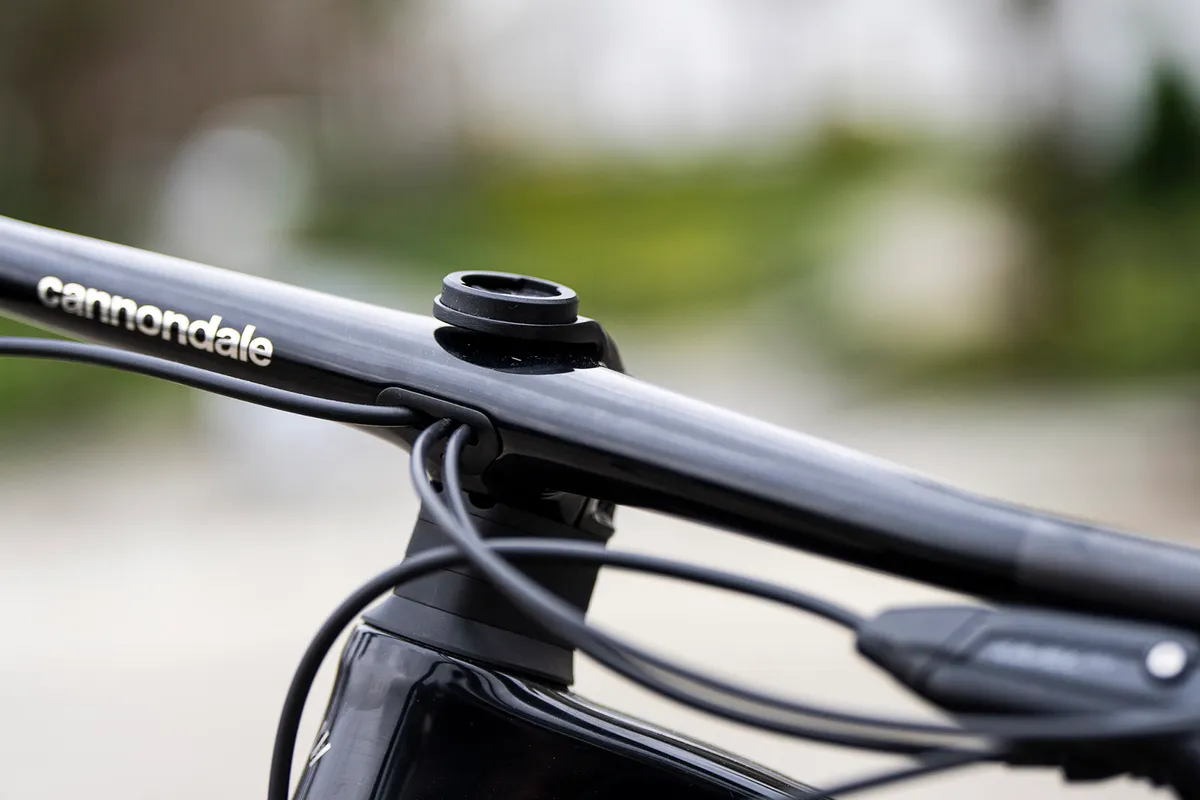
This, it says, means most XC brake levers can be fitted through the bearing, making bearing swaps that little bit easier.
Internally, a bolted clamp prevents the cables migrating as you turn the bar and keeps things quiet.
There's chainstay protection and a small flexible protector for the main pivot.
Cannondale Scalpel 1 geometry
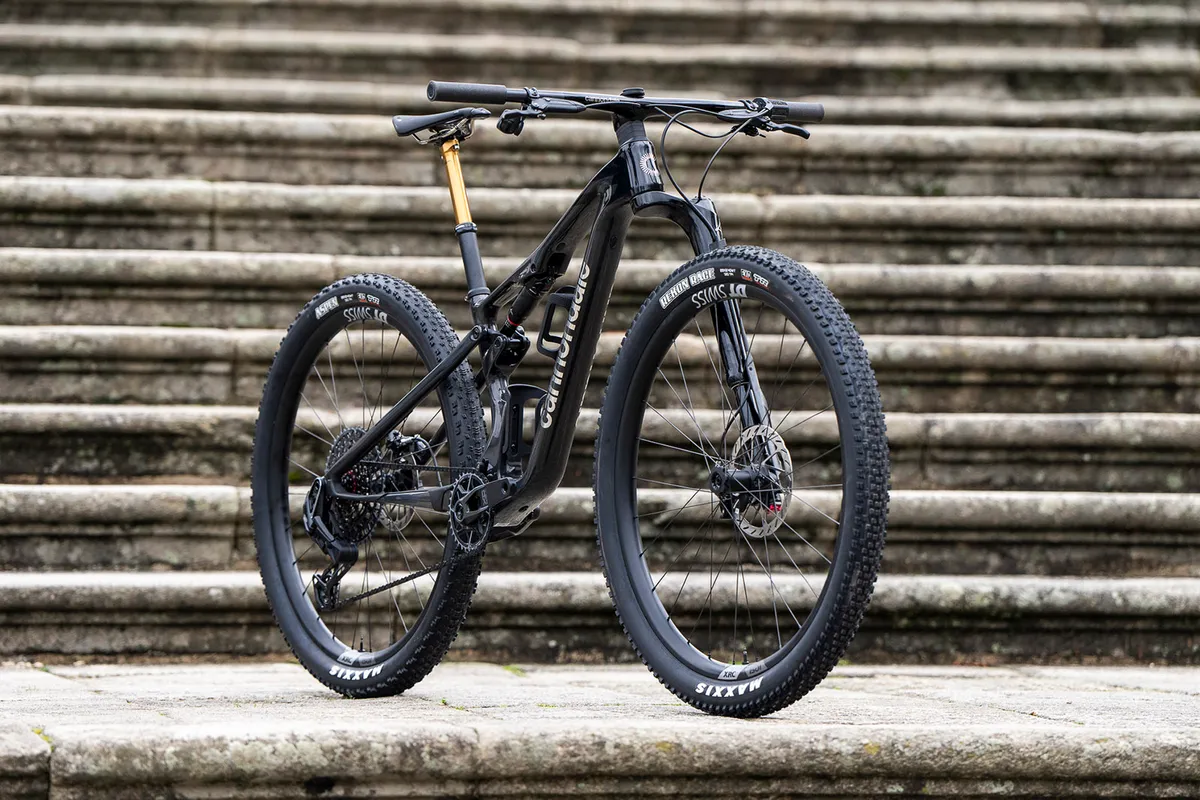
Cannondale has updated the Scalpel’s geometry to bring it in line with modern cross-country bikes.
The head angle sits at 66.6 degrees – relatively slack these days, while reach has grown 10-15mm per size, with a Large sitting at 475mm.
The bottom bracket has been dropped a couple of millimetres to 334mm.
Further back, the chainstays grow with each size, ranging from 434mm to 446mm, while the effective seat angle sits at a moderate 75.5 degrees.
| Size | Small | Medium | Large | X Large |
|---|---|---|---|---|
| Reach (mm) | 425 | 450 | 475 | 510 |
| Stack (mm) | 595 | 595 | 604 | 613 |
| Head tube angle (degrees) | 66.6 | 66.6 | 66.6 | 66.6 |
| Seat tube angle (degrees) | 75.5 | 75.5 | 75.5 | 75.5 |
| Seat tube length (mm) | 380 | 400 | 445 | 500 |
| BB height (mm) | 334 | 334 | 334 | 334 |
| Wheelbase (mm) | 1146 | 1175 | 1208 | 1251 |
| Chainstay (mm) | 434 | 438 | 442 | 446 |
| Top tube (mm) | 579 | 597 | 625 | 669 |
| Standover (mm) | 736 | 744 | 752 | 763 |
Cannondale Scalpel suspension
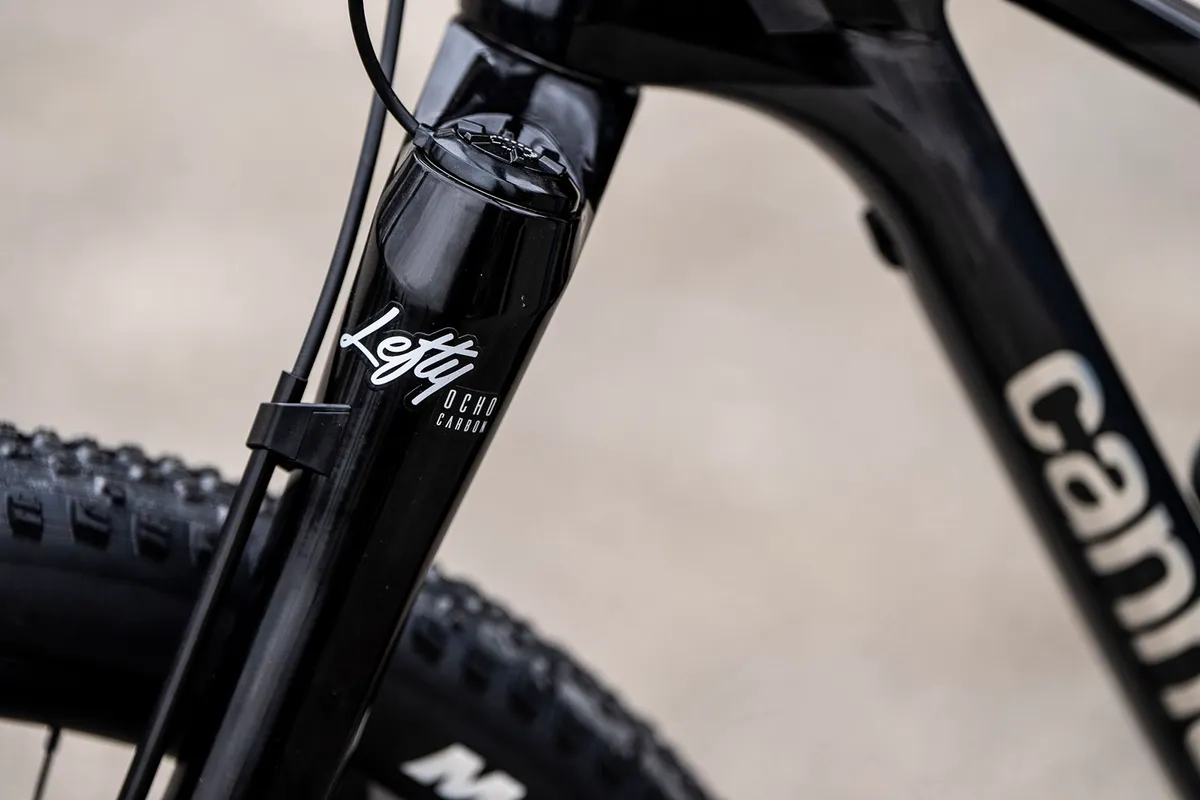
At the front of the bike is a 120mm-travel Lefty Ocho Carbon fork.
This is an inverted fork, with a single leg – it’s pretty distinct.
It offers low-speed compression and rebound damping, as well as a remote lockout.
The sliding bushes and needle bearings, into which the single stanchion slides, mean that, in theory, the fork can cope better with binding loads than a traditional mountain bike suspension fork.
This should mean that under braking on steep descents, the fork stays more active, boosting grip.
Cannondale also claims the fork’s damper and air spring are better isolated in terms of feel and adjustment, meaning the damper can be set up to help reduce brake dive, while ensuring the fork stays supple.
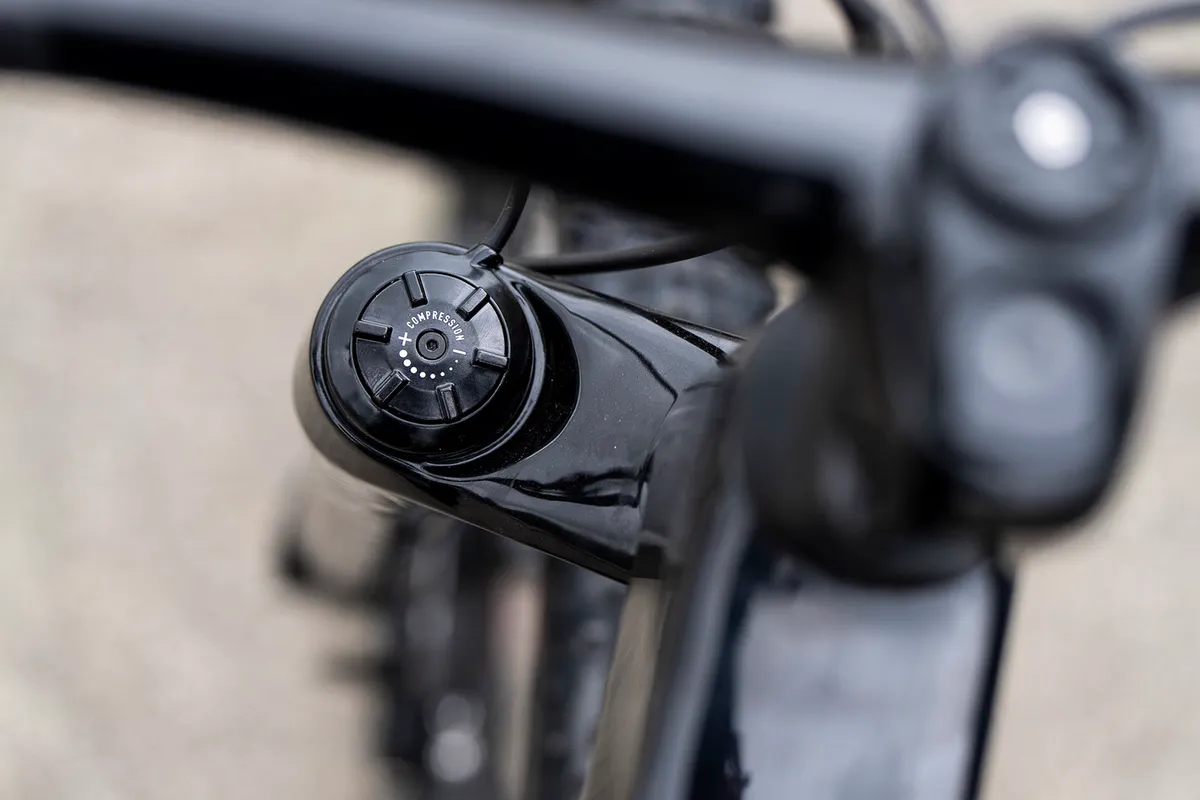
The fork’s lower leg is protected by a composite fender, which doubles as a brake hose guide.
At the back, the 120mm of travel is controlled by a RockShox SIDLuxe Select+ shock, on non-US builds.
Both shock and fork benefit from a two-positon on-bar lockout via a RockShox TwistLoc barrel, though US buyers will only get a shock lockout.
The cable for the shock runs neatly through the top tube.
The suspension uses Cannondale’s FlexPivot design – similar to the flex-pivot linkage designs found on the bulk of XC bikes these days.
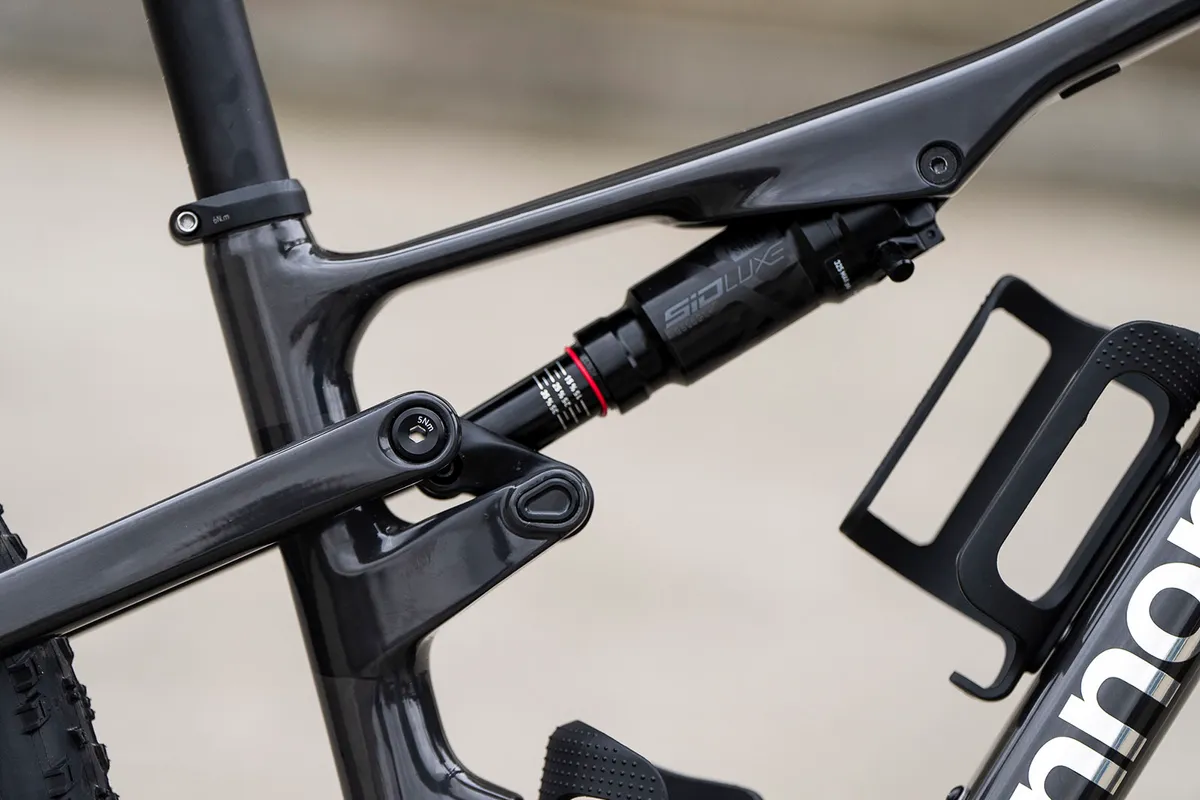
The flattened chainstay is where the flex is engineered, sitting near the rear axle in a position Cannondale says is basically a virtual Horst-link.
A short rocker pushes the shock, nestled under the top tube.
The suspension has been designed to have around 100 per cent (or just above) anti-squat in the higher gears in and around the sag point of the suspension.
This is done to ensure the bike remains stable under pedalling loads.
Beyond around 50 per cent travel, the anti-squat drops off, leaving the suspension more free of crank influences, enabling it to smooth the way effectively.
Deep in the travel, there should be minimal pedal feedback.
The location of the suspension’s pivots changes slightly with each size, to tune the feel for larger, or smaller, riders.
Cannondale Scalpel 1 specifications
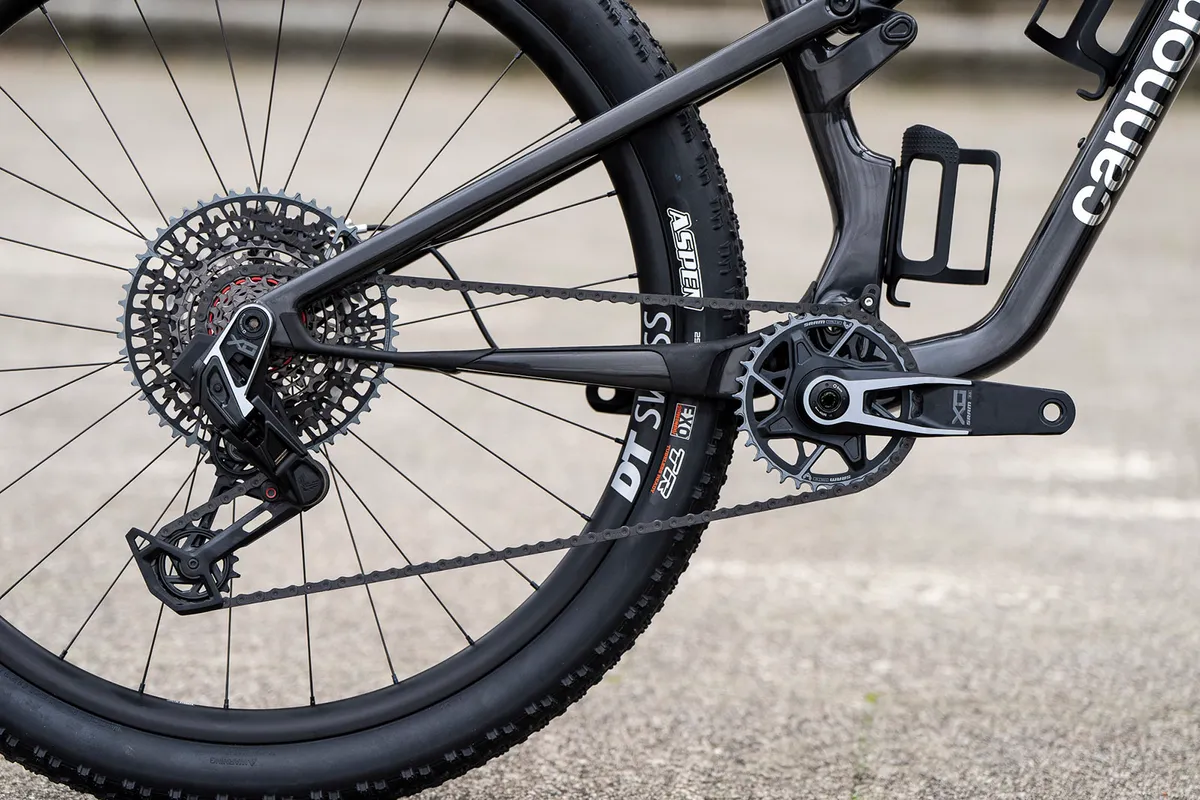
The Lefty Ocho Carbon and SIDLuxe suspension give the bike its 120mm of travel.
SRAM supplies the XO AXS Transmission, with a 34t chainring.
Wheels come from DT Swiss, with the XCR1501 carbon hoops wrapped in Maxxis tyres – a 2.4in Rekon Race at the front and a 2.4in Aspen at the back.
Attached to the spokes, near the front hub, is a GPS device that can be linked to your computer.
This not only feeds real-time data, but can also advise on service intervals and how far your bike has been ridden in its lifetime.
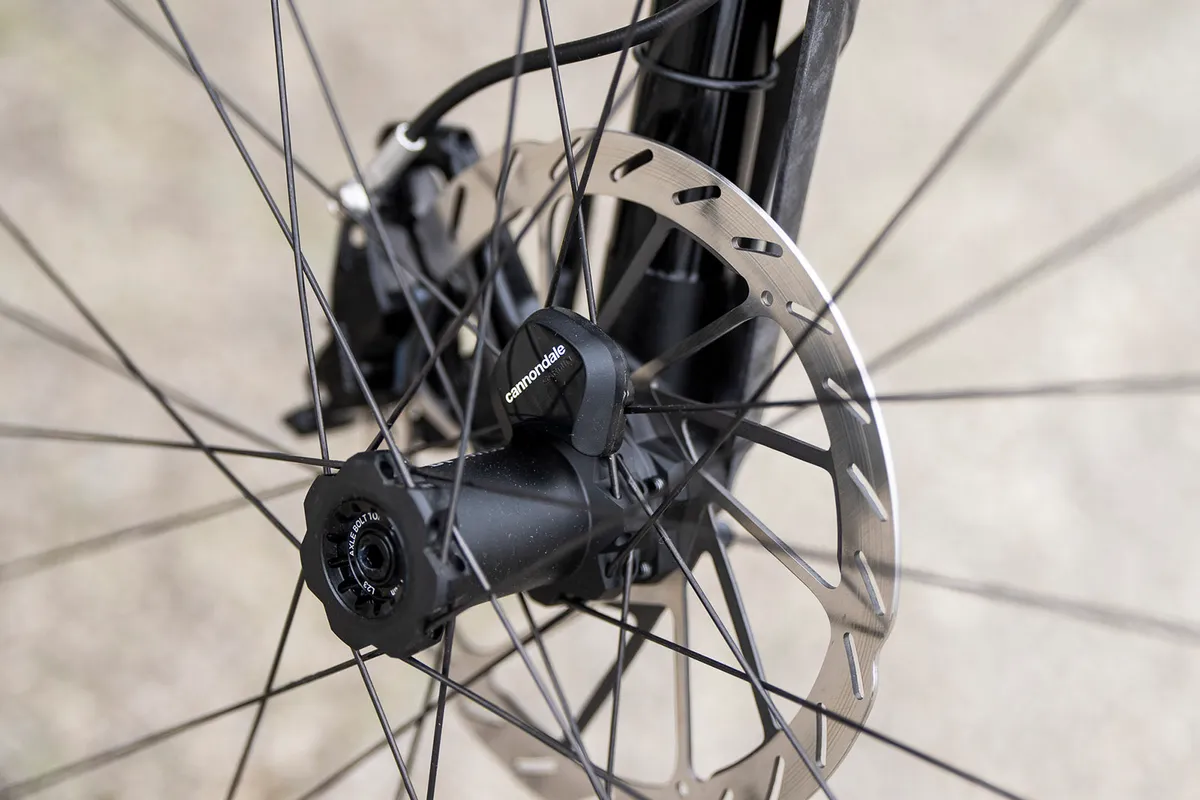
There’s a Fox Transfer SL Performance Elite dropper post, topped with a Prologo saddle, and an integrated bar/stem from Cannondale.
The integrated bar and stem was designed after a sweep of the Cannondale staff’s preferences, with the brand making a bar it "didn’t want to suck". It’s neutral in shape and can be cut from its 760mm width if you wish.
Cables and hoses are integrated neatly through the bar, while a Garmin mount sits on top.
Cannondale Scalpel 1 ride impressions
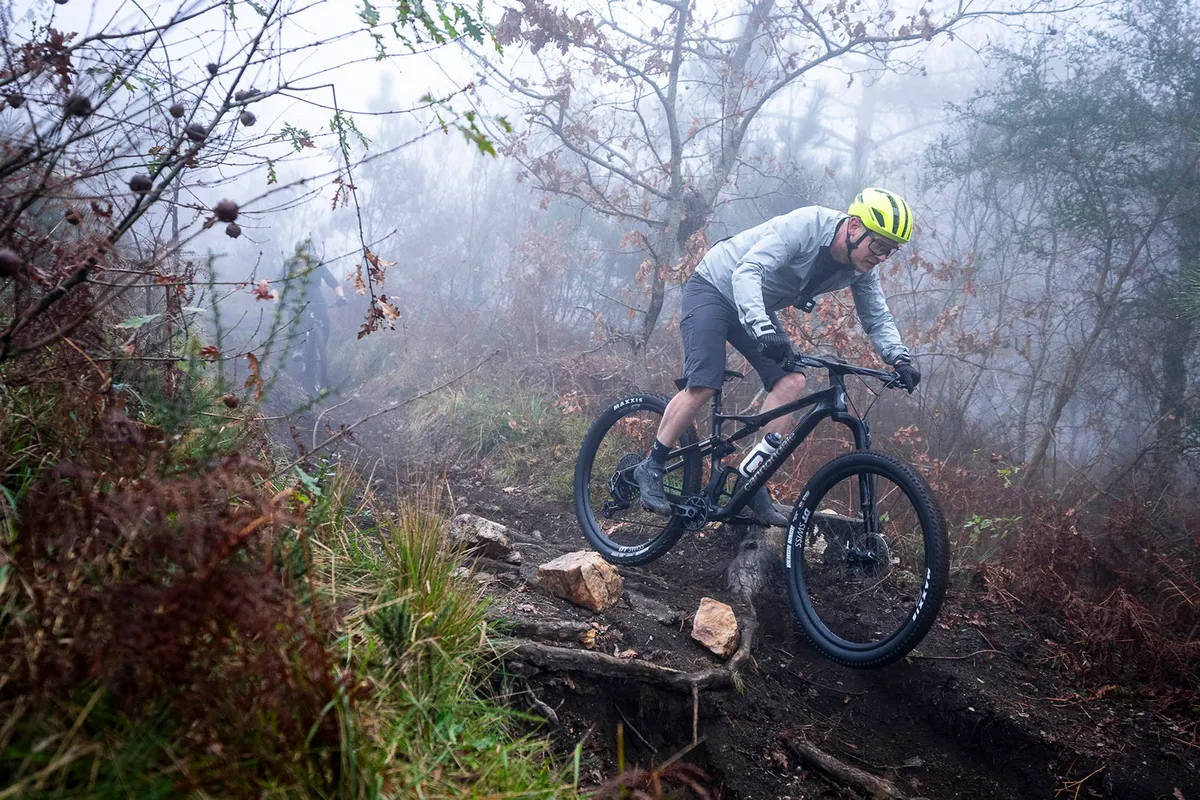
I was lucky to ride the Scalpel 1 on the bike launch in Portugal over a couple of damp days.
Despite a few nervous glances at the skinny-treaded tyres and the damp roots all over the place, the well-drained soil ensured I puckered up surprisingly little.
Setting up the Scalpel 1 wasn’t an arduous process. The rear sag was set at 25 per cent, and tyre pressures were 22psi at the front and 24psi at the back.
The Lefty Ocho’s setup isn’t as tricky as you might imagine. There’s an air valve near the front wheel axle, and a pressure and setup chart on the fork.
I used the suggested setup during my rides, though I’ll spend more time adjusting the fork when I have one here in the UK. Regardless, the suggested settings felt pretty good.
I left the low-speed compression-damper dial on top of the fork fully open, to give me as much suppleness as possible.
Cannondale Scalpel 1 climbing performance
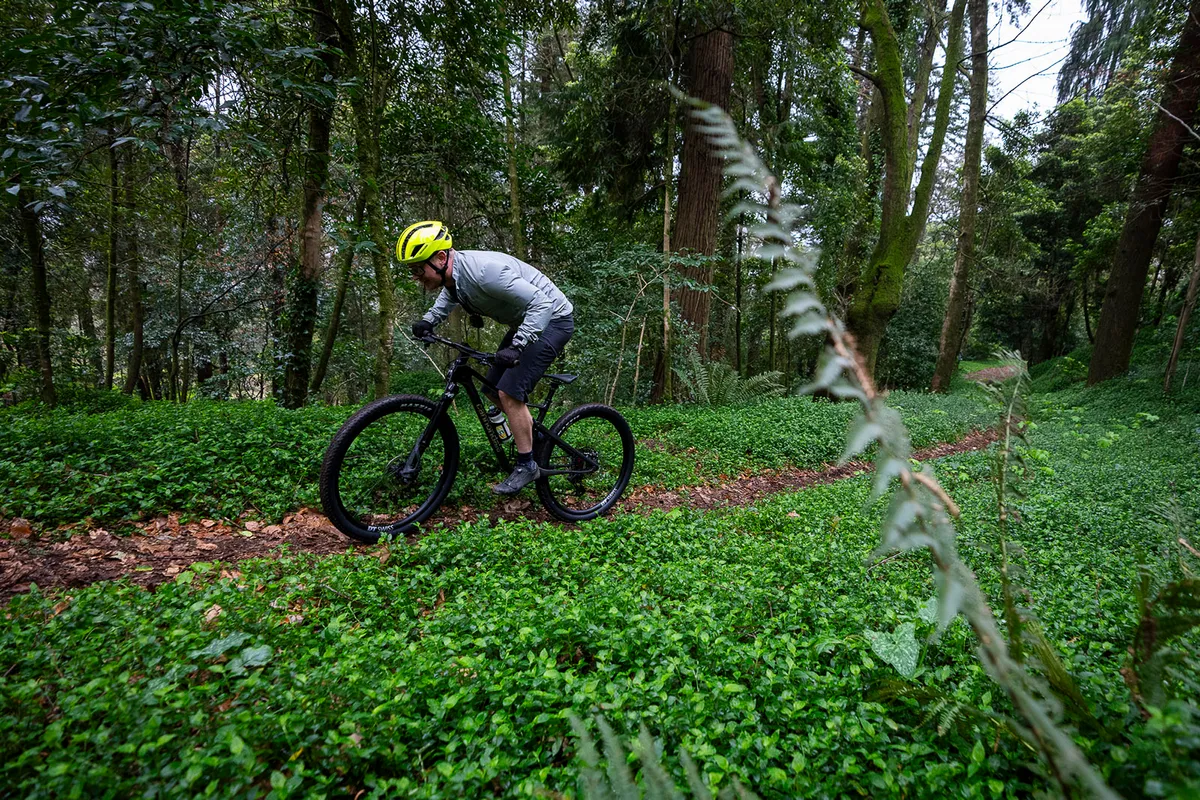
Give any bike an Aspen rear tyre and a firm lockout, and unless the frame is built from noodles, it’s going to get up smooth climbs with at least some level of liveliness.
The Scalpel is no noodle, and despite a slimmed-down profile over the previous version of the bike, it doesn’t swing and sway under your power as you haul on the bar on climbs.
The TwistLoc is easy to operate, and on smoother climbs, even on dirt, I was happy switching to the locked position.
The sidewalls of Maxxis’ lightweight XC tyres are highly supple, so there’s a decent level of grip and comfort even with firm suspension.
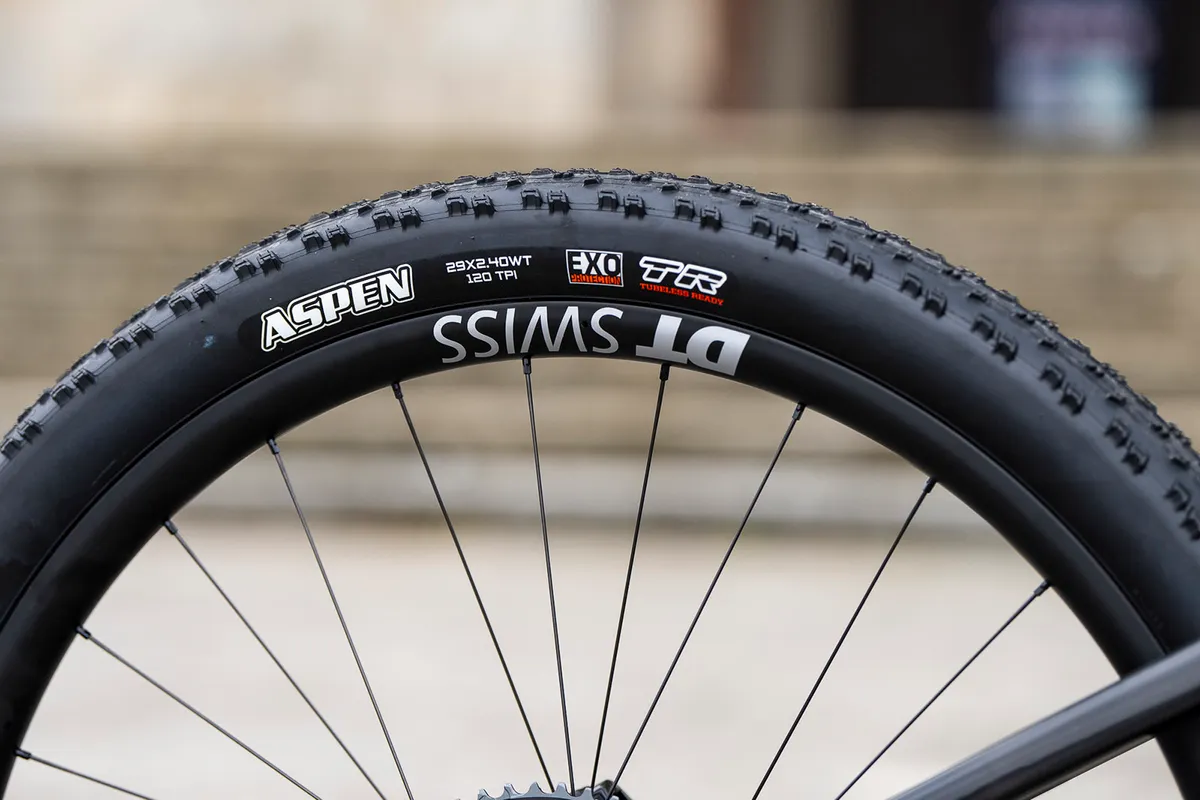
When you hit chunkier climbs, switching to the Open mode reveals a bike that’s still no slouch.
When you're sat pedalling, the suspension remains still, enabling efficient ascents. If you stand, like virtually every full-suspension bike, there’s a bit of pedal bob, but on the whole, the Scalpel feels super-stable when you’re inching your way up hills.
When it gets loose, there’s just enough free movement available to the rear wheel to help it generate more grip than you’d give the Aspen credit for.
The steeper seat angle feels good, too, while the front and rear proportions of the bike are well balanced.

There’s decent traction on offer, thanks to the rear chainstays not being too short, and there’s room over the front of the bike to enable you to move back and forth to manage rear traction and front-end directional control.
SRAM’s AXS Transmission is a stand-out performer when the going gets tough.
Shifting under power is excellent, and when coated in grime, it doesn’t feel horrible and gritty.
Cannondale Scalpel 1 descending performance
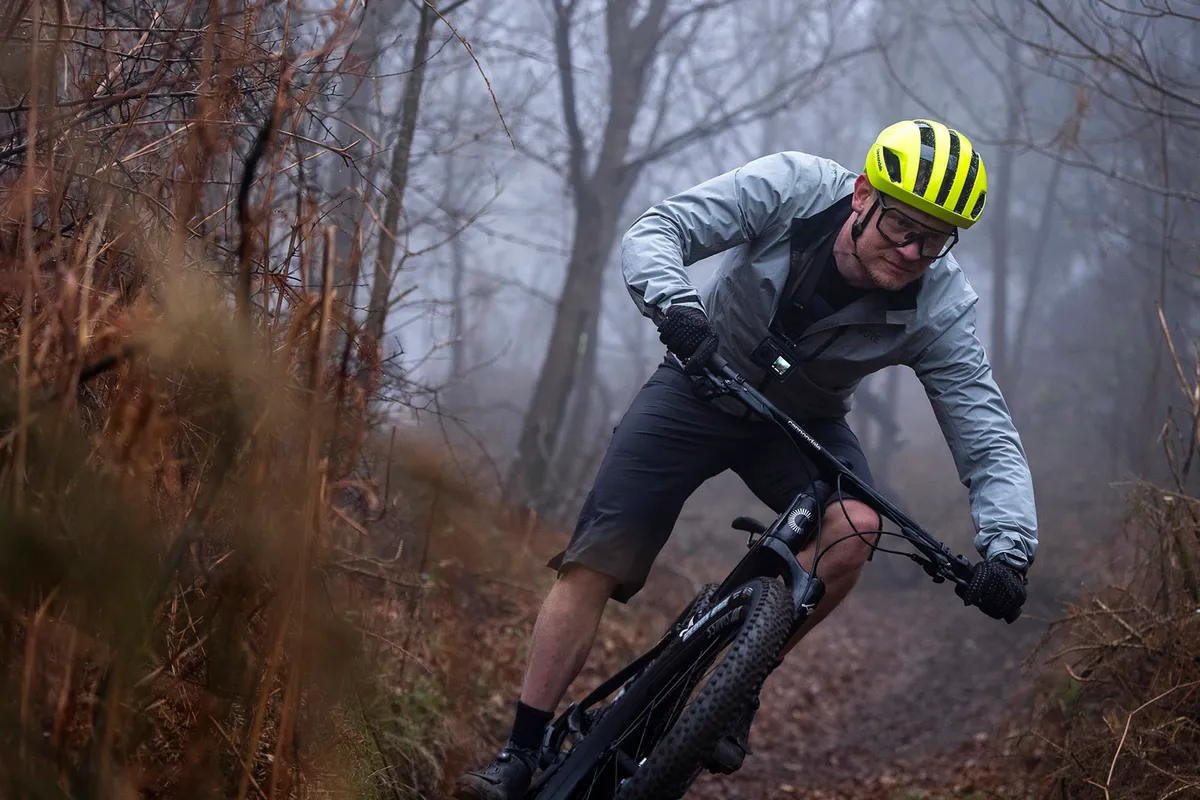
With its updated geometry, the new Scalpel is a more confident beast than the previous generation.
The longer reach and slacker head angle give it stability at speed and through corners, while the front and rear balance is good.
The slightly lower BB feels nice when you’ve got the tyres on their shoulder and you’re carving a corner as best you can for the traction on offer.
When you’re doing so, the chassis feels secure – it’s not so stiff that you’re constantly battling traction, nor is it so soft that it feels vague.
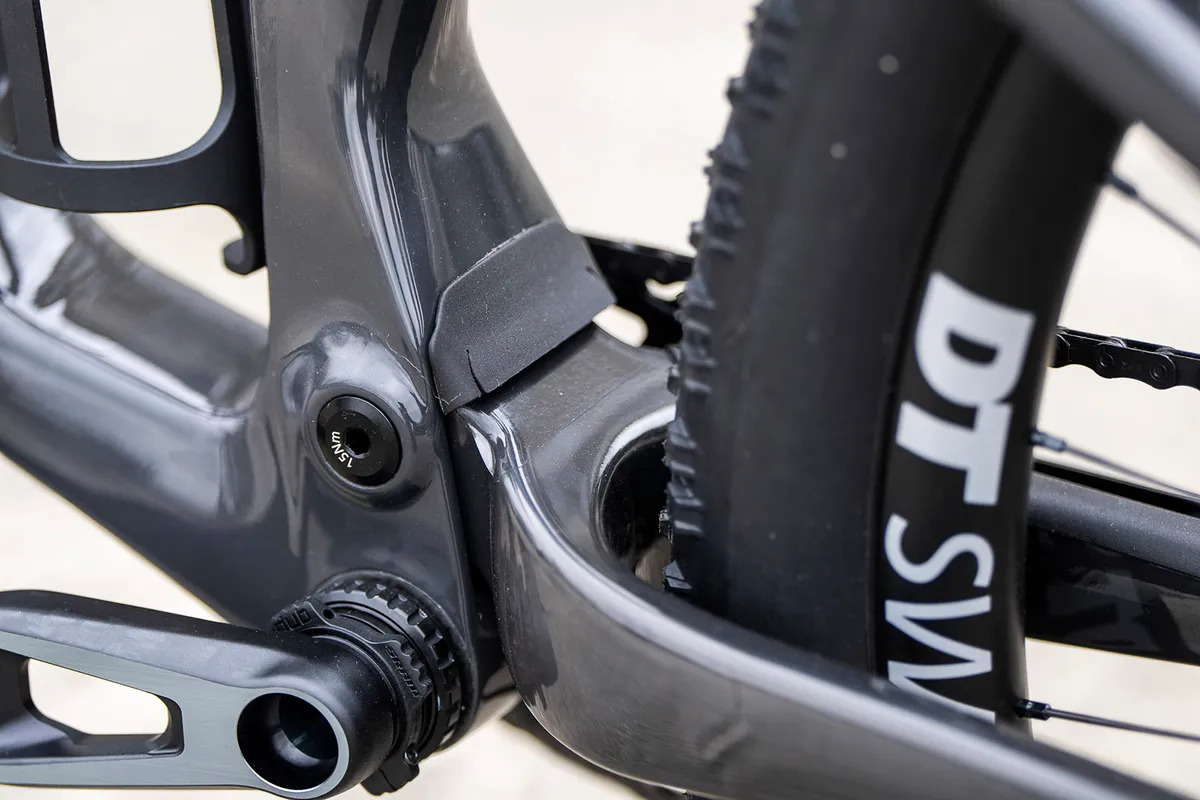
Though it’s a race-focused bike, there’s still the ability to pick it up and play around. The odd jump and drop doesn’t seem to phase the bike.
The suspension plays its part here.
At the back, the previous-generation Scalpel might have been a little ‘trapdoor’-like – it had good stability under pedalling, but fell through its mid and late stroke a little easily.
This transition to the deeper depths of the new Scalpel's travel seems, on initial impression, to be more controlled.
This gives you something to push against in rolling terrain and means the rear end doesn’t clang off its bumpers on moderate-sized drops.
Up front, the Lefty might split opinions when it comes to aesthetics, but it’s a solid fork.
Though it has only one leg, there's plenty of stiffness – it’s anything but unpredictable in its handling.
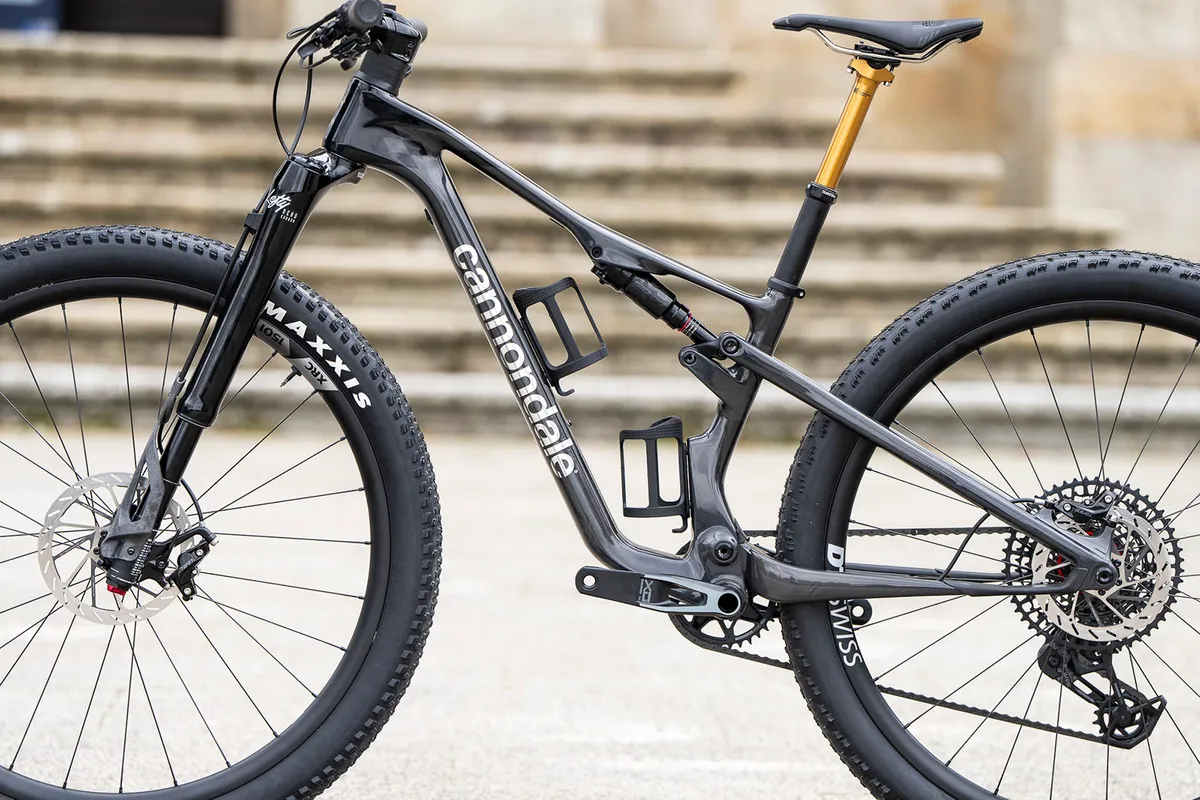
Its motion through the travel feels a little different from a traditional fork. This is due, I believe, to the needle bearings – you can sort of feel them rolling. However, it’s reactive and smooth, nonetheless.
Where I noticed the internal architecture most was on flat landings. Here, the fork really doesn’t bind, enabling the travel to be used smoothly and with a less harsh feel than I’d expected.
As ever, I’d like to place this fork head to head with a SID or Fox 34 Step-Cast to really delve into the relative performance.
Elsewhere, the component package does a good job.
The low-profile tread blocks are never going to offer up tons of grip, especially in damp conditions. But, I’ve said it before, the Rekon Race (and Rekon, for that matter) is one of my favourite XC tyres.
The blocks roll fast, and there’s always a surprising amount of cornering grip from the diminutive shoulder treads and supple carcass.

The four-piston SRAM Level brakes are powerful enough in this capacity and the carbon DT Swiss rims aren’t overly harsh.
The integrated bar/stem will never be my favourite – I like the ability to adjust bar roll and they’re rarely as comfortable as separate units.
However, the benign shape of this example, with an 8-degree backsweep and 5-degree upsweep, didn’t offend. How comfy it will be on longer rides remains to be seen though.
Cannondale Scalpel 1 early verdict

The new Scalpel has certainly been brought up to date, with a new shape, suspension feel and modern parts package.
Although I’ve only ridden it briefly, the Scalpel feels confident and capable up and down hills.
It’s not quite as radical as the new Specialized Epic 8 in terms of its shape, however it’s only a millimetre here and half a degree there away. But, this is surely the bike the Scalpel will be compared immediately to.
I’m looking forward to spending more time on both of these bikes in the coming months.
Product
| Brand | Cannondale |
| Price | €9499.00, £8550.00, $9500.00 |
| Weight | 11.00kg |
Features
| Fork | Lefty Ocho Carbon, 120mm travel |
| Stem | Cannondale SystemBar XC-One Flat |
| Chain | SRAM XO |
| Frame | Series 1 carbon, 120mm |
| Tyres | Maxxis Rekon Race 29x2.4 WT EXO f, Maxxis Aspen 29x2.4 WT EXO r |
| Brakes | SRAM Level Stealth Silver, 180/160mm rotors |
| Cranks | SRAM XO 34t |
| Saddle | Prologo Dimension NDR |
| Wheels | DT Swiss XRC1501; Axel - Lefty F, 12x148mm R |
| Headset | Acros ICR |
| Shifter | SRAM AXS T-Type Pod |
| Cassette | SRAM XO |
| Seatpost | Fox Transfer SL Performance Elite |
| Grips/tape | RockShox Smooth Silicon |
| Handlebar | Cannondale SystemBar XC-One Flat |
| Rear shock | RockShox SIDLuxe Select+ |
| Bottom bracket | SRAM DUB |
| Available sizes | S, M, L, XL |
| Rear derailleur | SRAM XO AXS T-Type |
